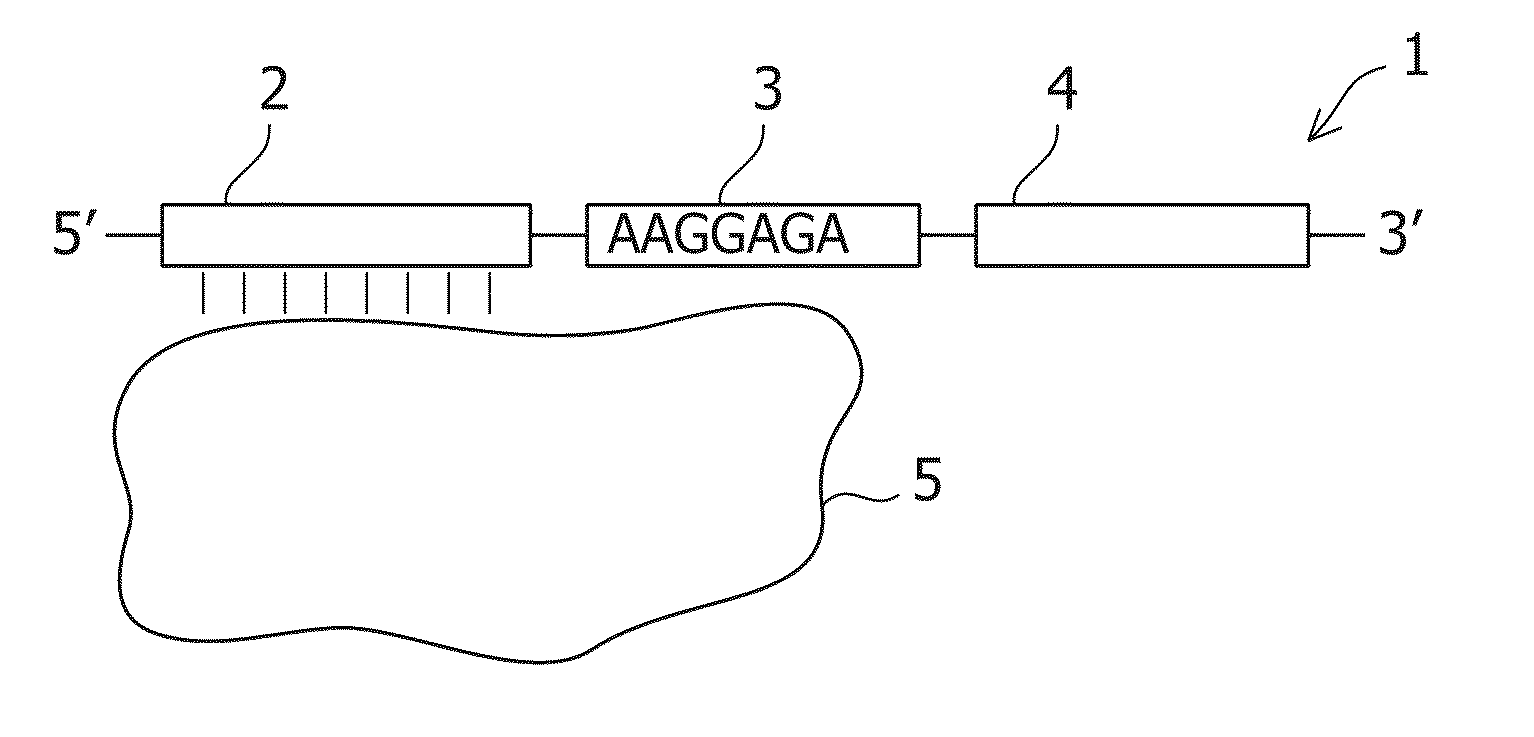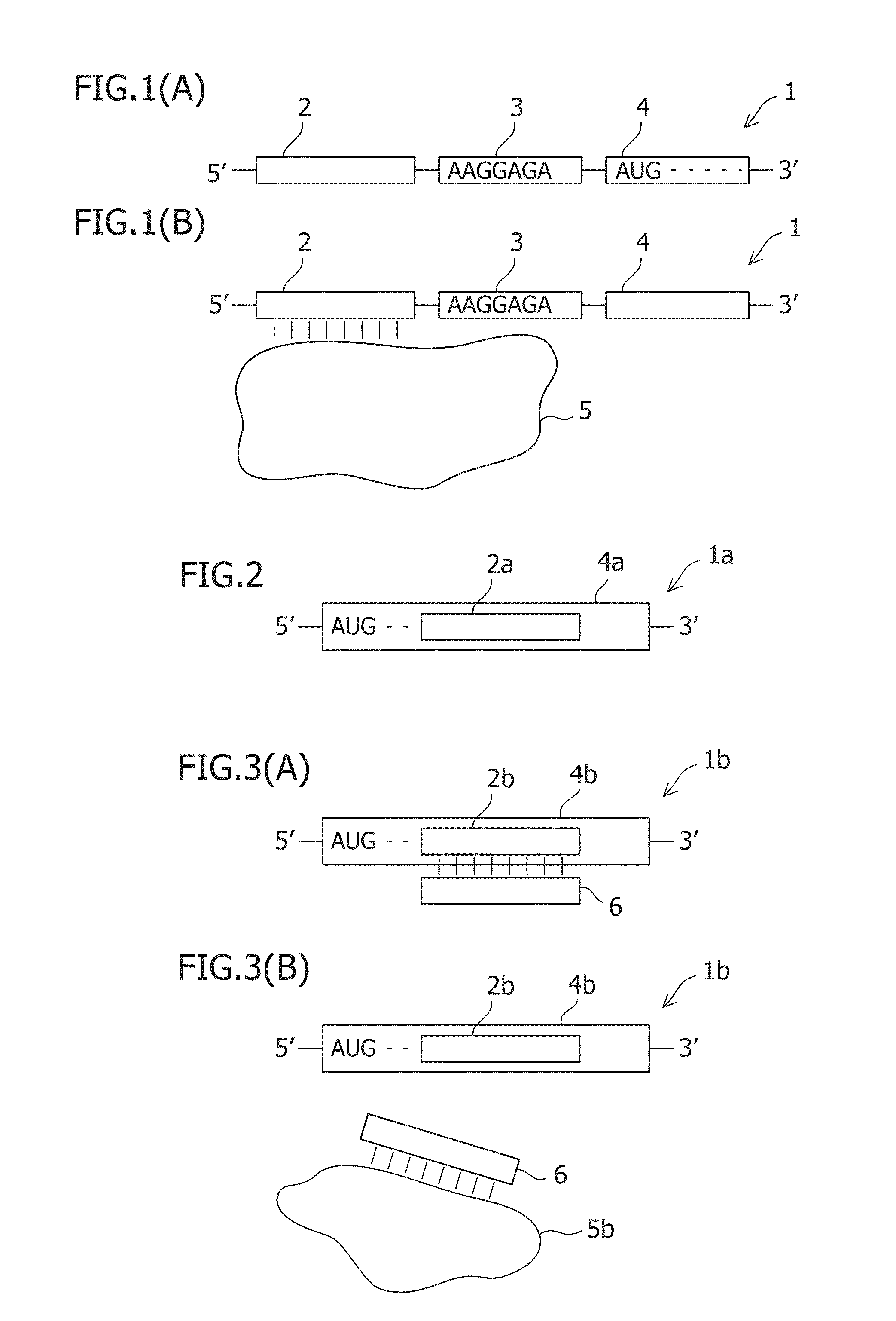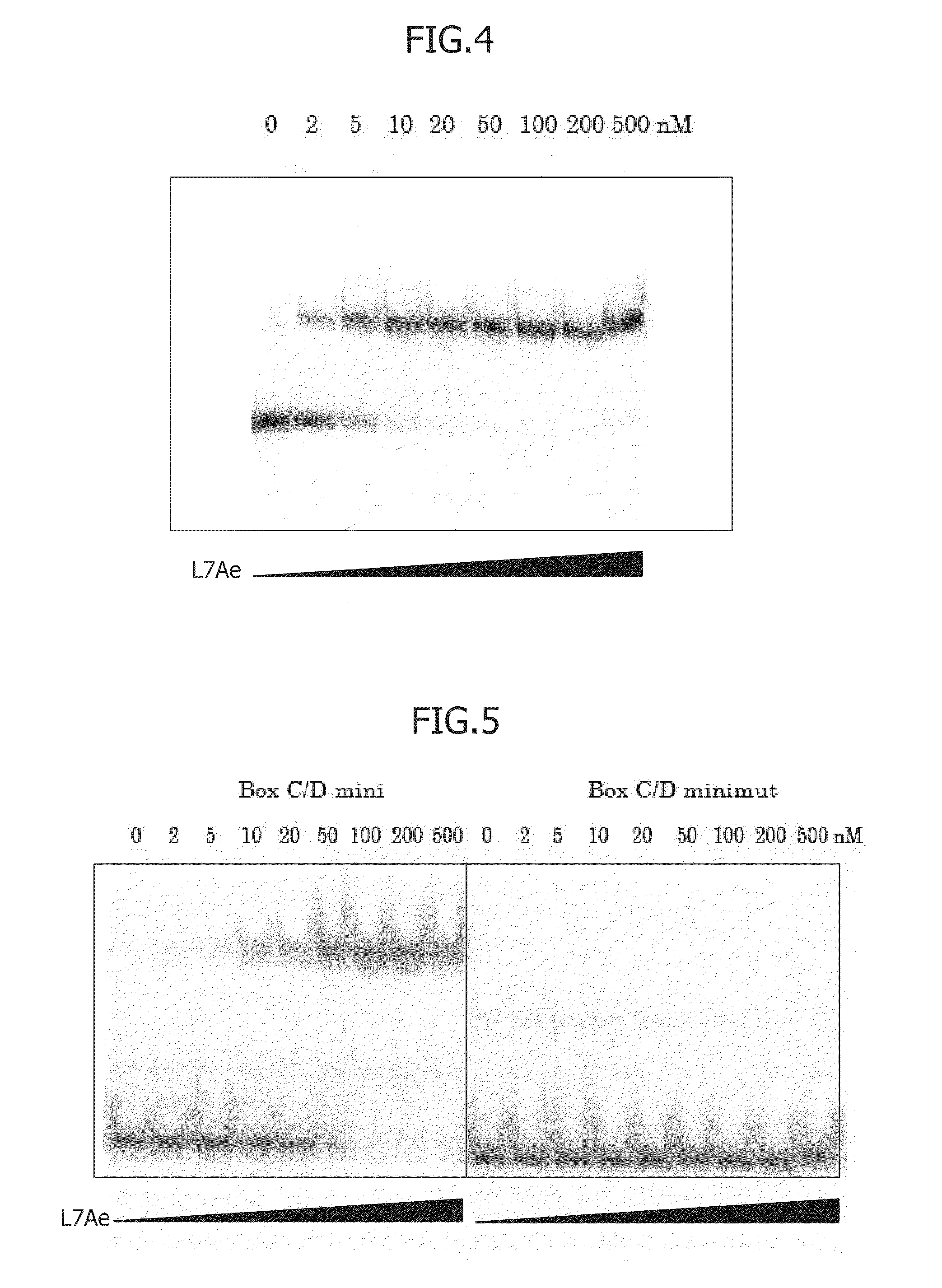Protein-Responsive Translational Regulatory System Using RNA-Protein Interacting Motif
a technology of rnaprotein and interacting motif, which is applied in the field of translation regulation system and translation regulation system using rnaprotein interaction, can solve the problems of not being able to regulate gene expression in response to biomacromolecules, cannot be applied directly as a technique of regulating translation, and no artificial translational repression/activation system of a target gene using such an rnp interacting motif has been constructed intracellular or extracellularly or externally, so that the translation reaction reaction
- Summary
- Abstract
- Description
- Claims
- Application Information
AI Technical Summary
Benefits of technology
Problems solved by technology
Method used
Image
Examples
fifth embodiment
the present invention enables intracellular translational regulation. Translational regulation in cells, particularly, cancer cells, is highly possibly applicable therapeutically and can therefore serve as very useful means.
sixth embodiment
the present invention provides a translational regulatory system comprising a fusion protein containing L7Ae as a tag sequence and a first protein.
This fusion protein is specifically a fusion protein comprising L7Ae and a first protein as another arbitrary protein. Hereinafter, such a fusion protein is also referred to as a tag sequence-fused protein. Examples of the first protein as an arbitrary protein include, but not limited to, fluorescent proteins, apoptosis-inducing proteins, apoptosis-repressing proteins, and organellar localized proteins. Theoretically, the desired protein can be used.
The translational regulatory system according to this embodiment further comprises an mRNA having a sequence specifically binding to L7Ae and a sequence encoding a second protein. Specifically, the fusion protein is preferably used together with the mRNA. In the mRNA, the sequence specifically binding to L7Ae is preferably a Box C / D sequence. Alternatively, a sequence mutated from the Box C / D ...
example 1
[Preparation of RNA-Protein Complex Interacting Motifs (RNAs and Proteins) Used in Translational Regulation]
[Preparation of L7Ae-Binding RNA Box C / D]
L7Ae-binding RNA Box C / D (SEQ ID NO: 5) was prepared by preparing a DNA template containing a T7 promoter, followed by transcription reaction using T7 RNA polymerase. The details will be shown below. First, 100 μL of reaction solution was prepared for preparing DNA. The reaction solution contained a mixture of 1 ng of Box C / D template (5′-CTAATACGACTCACTATAGGCCAGAGTGGGCGTGATGCATGTCTAGGAAACTAGA CATGCTGACCCACTCTGGCC-3′) (SEQ ID NO: 1), 5 μL each of 10 μM Box C / D Fwd (5′-CTAATACGACTCACTATAGGCCAG-3′) (SEQ ID NO: 2) and Box C / D Rev (5′-GGCCAGAGTGGGTCAGCAT-3′) (SEQ ID NO: 3), 8 μL of 2.5 mM dNTP (TAKARA BIO INC.), 10 μL of Ex taq 10×buffer (TAKARA BIO INC.), and 0.5 μL of Ex taq DNA polymerase (TAKARA BIO INC.). 25 cycles each involving 94° C. for 30 seconds, 53° C. for 30 seconds, and 72° C. for 1 minute were performed for extension (SEQ ID ...
PUM
| Property | Measurement | Unit |
|---|---|---|
| dissociation constant Kd | aaaaa | aaaaa |
| dissociation constant Kd | aaaaa | aaaaa |
| pH | aaaaa | aaaaa |
Abstract
Description
Claims
Application Information
 Login to View More
Login to View More - R&D
- Intellectual Property
- Life Sciences
- Materials
- Tech Scout
- Unparalleled Data Quality
- Higher Quality Content
- 60% Fewer Hallucinations
Browse by: Latest US Patents, China's latest patents, Technical Efficacy Thesaurus, Application Domain, Technology Topic, Popular Technical Reports.
© 2025 PatSnap. All rights reserved.Legal|Privacy policy|Modern Slavery Act Transparency Statement|Sitemap|About US| Contact US: help@patsnap.com



